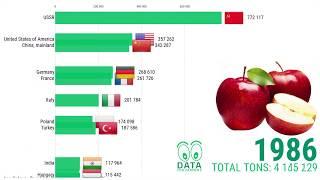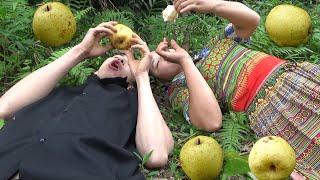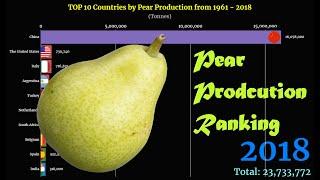Pear production worldwide | Top 10
Description
#pear #agriculture #production
This video shows the top 10 pear production in tons per country in the period 1961 - 2017.
The pear is native to coastal and mildly temperate regions of the Old World, from western Europe and north Africa east right across Asia. It is a medium-sized tree, reaching 10–17 meters (33–56 ft) tall, often with a tall, narrow crown; a few species are shrubby.
Pears and apples cannot always be distinguished by the form of the fruit; some pears look very much like some apples, e.g. the nashi pear. One major difference is that the flesh of pear fruit contains stone cells.
Pear cultivation in cool temperate climates extends to the remotest antiquity, and there is evidence of its use as a food since prehistoric times. Many traces of it have been found in prehistoric pile dwellings around Lake Zurich.
The pear was also cultivated by the Romans, who ate the fruits raw or cooked, just like apples.
Pears have been cultivated in China for approximately 3000 years.
According to Pear Bureau Northwest, about 3000 known varieties of pears are grown worldwide.
Three species account for the vast majority of edible fruit production, the European pear Pyrus communis subsp. communis cultivated mainly in Europe and North America, the Chinese white pear (bai li) Pyrus ×bretschneideri, and the Nashi pear Pyrus pyrifolia (also known as Asian pear or apple pear), both grown mainly in eastern Asia. There are thousands of cultivars of these three species.
Some very well-known cultivars are:
'Beth'
’Beurré Hardy’
’Beurré Superfin’
'Concorde'
'Conference'
’Doyenne du Comice’
'Joséphine de Malines'
In 2017, world production of pears was 24 200 000 tonnes, led by China with 68% of the total.
Pear and walnut trees were held to be the sacred abodes of beneficent spirits in pre-Islamic Chechen religion and, for this reason, it was forbidden to fell them.
➖➖⬇️➖➖ VIDEO ➖➖⬇️➖➖
DISCLAIMER:
This graph is based on the current available data. We will update when there is new data available. No rights can be derived from the data.
SOURCE:
http://foastat.org/ United Nations and Wikipedia.
MUSIC:
Patrick Patrikios - Running Out
https://www.youtube.com/watch?v=hU3ZLw56WPk
IMAGE:
Beverly Buckley from Pixabay
➖➖⬇️➖➖ DATA FOR FARMERS ➖➖⬇️➖➖
We make videos with data from agricultural sources. You are welcome to download and/or share our videos. We only ask you to post a link to our YouTube channel.
DONATE TO KEEP US GOING




![TOP 10 RICE PRODUCTIONS COUNTRY / WORLDWIDE [1960-2020] Highest RICE PRODUCTION](https://no-mar.com/uploads/thumbs/8248309e6-1.jpg)
















Comments